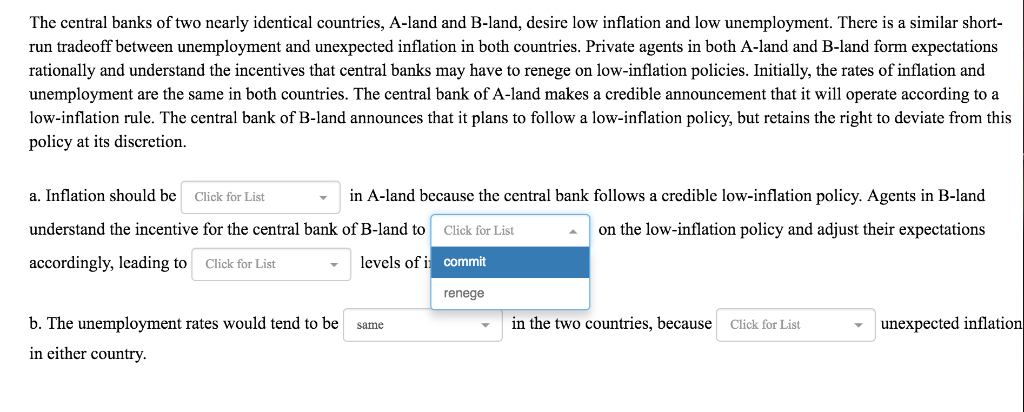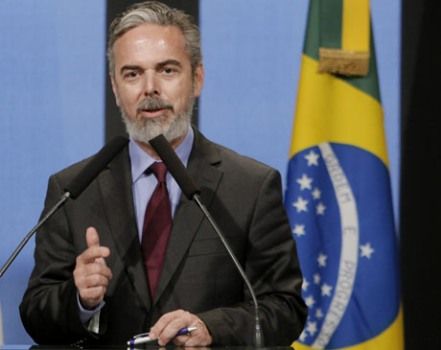
The IMF was also responsible for enforcing the Bretton Woods agreement. The collapse of the Bretton Woods system between 1971 and 1973 led to the general adoption by advanced countries of a managed floating exchange rate system, which is still with us. As was argued by Despres et al. (1966) in contradistinction to Triffin, the ongoing US balance of payments deficit was not really a problem. The rest of the world voluntarily held dollar balances because of their valuable service flow – the deficit was demand-determined.

The remaining part of the System, the adjustable peg disappeared by March 1973. The shift in policy mirrored the accommodation of fiscal deficits reflecting the increasing expense of the Vietnam War and Lyndon Johnson’s Great Society. In 1945, Roosevelt and Churchill prepared the postwar era by negotiating with Joseph Stalin at Yalta about respective zones of influence; this same year Germany was divided into four occupation zones (Soviet, American, British, and French).
. What is meant by the Bretton Woods Agreement
In their view, the Bretton Woods system could have continued indefinitely. This of course was not the case, but although the par value system ended in 1973 the dollar standard without gold is still with us, as McKinnon (1969, 1988, 2014) has long argued. These organizations hold great significance on the global front—they facilitate international trade and finance nations.
Three weeks of discussion later, the delegates signed the Final Act of the United Nations Monetary and Financial Conference, which included charters outlining the aims and mechanisms of both the IMF and IBRD. In response to a dangerous dip in value caused by too much currency in circulation, President Nixon started to deflate the dollar’s value in gold. Nixon devalued the dollar to 1/38 of an ounce of gold, and then to 1/42 of an ounce.
Moreover, all other currencies in the system were then pegged to the U.S. dollar’s value. The exchange rate applied at the time set the price of gold at $35 an ounce. Q.18. G-77 can be seen as a reaction to the activities of the Bretton Woods Twins. (i) The Bretton Woods Twins – erstwhile colonial powers dominated the IMF and World Bank.
Design of the financial system
The World Bank Historical Timeline, created by the Archives, has many events exploring Bretton Woods and the early years of the World Bank. (i) Henry Ford used a Chicago slaughterhouse assembly line for his new automobile plant in Detroit. (ii) The what is meant by bretton woods agreement class 10 assembly line made automobile production more efficient and less expensive. It required people to perform a particular activity automatically and repeatedly. (iii) This improved their efficiency in particular work as well as their production pace.

The IMF was created in 1945 as an institution to monitor currency exchange rates and to lend dollars to nations. The agreement also saw the creation of World Bank whose goal was to offer financial assistance for countries that needed it after World War I. The shift toward a more pluralistic distribution of economic power led to increasing dissatisfaction with the privileged role of the U.S. dollar as the international currency. Acting effectively as the world’s central banker, the U.S., through its deficit, determined the level of international liquidity.
The Bretton Woods system in the 21st century
If anything, Bretton Woods was a return to a time devoid of increased governmental intervention in economies and currency systems. The system depleted US gold reserves—as more and more US dollars were issued to meet international demand. Unusually, this decision was made without consulting members of the international monetary system or even his own State Department, and was soon dubbed the Nixon Shock.
- (v) At first, many workers left because they couldn’t handle the stress of the job.
- It reflected the concerns that much of the financial resources of the Clearing Union envisioned by Keynes would be used to buy American goods, resulting in the United States holding the majority of bancor.
- Never before had international monetary cooperation been attempted on a permanent institutional basis.
- Large investments in housing and household goods appeared to set in motion a cycle of increased employment and earnings, rising consumer demand, more investment, and even more employment and incomes.
- The system depleted US gold reserves—as more and more US dollars were issued to meet international demand.
The Bretton Woods countries decided against giving the IMF the power of a global central bank. Instead, they agreed to contribute to a fixed pool of national currencies and gold to be held by the IMF. Each member country of the Bretton Woods system was then entitled to borrow what it needed, within the limits of its contributions.
The IMF set out to use this money to grant loans to member countries with financial difficulties. Each member is then entitled to withdraw 25% of its quota immediately in case of payment problems. If this sum should be insufficient, each nation in the system is also able to request loans for foreign currency. Thus, the new system would be devoid (initially) of governments meddling with their currency supply as they had during the years of economic turmoil preceding WWII. The gold standard was a currency measurement system in place in the United States up until the 1970s in which the value of the dollar was tied to gold. At the time of the Bretton Woods Agreement, one dollar was worth 1/35 of an ounce of gold.
A second source of concern was the dollar’s role in providing liquidity to the rest of the world. Elimination of the US balance of payments deficits (as the French and Germans were urging) could create a global liquidity shortage. There was much concern through the 1960s as to how to provide this liquidity. Never before had international monetary cooperation been attempted on a permanent institutional basis. Even more groundbreaking was the decision to allocate voting rights among governments, not on a one-state one-vote basis, but rather in proportion to quotas.
Pegged rates
This inflow of currency caused hyperinflation, as the supply of money overwhelmed the demand. The Bretton Woods Agreement created two Bretton Woods Institutions, the IMF and the World Bank. Formally introduced in December 1945 both institutions have withstood the test of time, globally serving as important pillars for international capital financing and trade activities.
What Could Replace the US Dollar as World Reserve Currency? – Barchart
What Could Replace the US Dollar as World Reserve Currency?.
Posted: Fri, 28 Apr 2023 07:00:00 GMT [source]
More investment and more employment created tendencies of speculations which led to the Great Depression of 1929 upto the mid-1930s. Thousands of men and women, who were thrown out of work, migrated to town and cities. This indirectly led to global agriculture and rapid urbanisation, a prerequisite of industrial growth. Economists and other planners recognized in 1944 that the new system could only commence after a return to normality following the disruption of World War II. It was expected that after a brief transition period of no more than five years, the international economy would recover and the system would enter into operation.
The Bretton Woods Agreement was negotiated in July 1944 by delegates from 44 countries at the United Nations Monetary and Financial Conference held in Bretton Woods, New Hampshire. We successfully provide students with intensive courses by India’s top faculties and personal mentors. PW strives to make the learning experience comprehensive and accessible for students of all sections of society.
Bretton Woods System and 1944 Agreement
The IMF, based on the principle of a credit union, whereby members could withdraw more than their original gold quotas, was established to provide relief for temporary current account shortfalls. The new economic system required an accepted vehicle for investment, trade, and payments. Unlike national economies, however, the international economy lacks a central government that can issue currency and manage its use.
President Richard Nixon suspended the system in 1971 after which governments let their currencies float and the system was ended in 1973. As a result of the establishment of agreed upon structures and rules of international economic interaction, conflict over economic issues was minimized, and the significance of the economic aspect of international relations seemed to recede. Member countries could only change their par value by more than 10% with IMF approval, which was contingent on IMF determination that its balance of payments was in a “fundamental disequilibrium”. Before the war, the French and the British realized that they could no longer compete with U.S. industries in an open marketplace. During the 1930s, the British created their own economic bloc to shut out U.S. goods. Churchill did not believe that he could surrender that protection after the war, so he watered down the Atlantic Charter’s “free access” clause before agreeing to it.
On a larger scale, however, the agreement unified 44 nations from around the world, bringing them together to solve a growing global financial crisis. It helped to strengthen the overall world economy and maximize international trade profit. The plan adopted at Bretton Woods resembled the White plan with some concessions in response to Keynes’s concerns. A clause was added in case a country ran a balance of payments surplus and its currency became scarce in world trade. The fund could ration that currency and authorize limited imports from the surplus country. In addition, the total resources for the fund were raised from $5 million to $8.5 million.
This decrease in the amount of money would act to reduce the inflationary pressure. Based on the dominant British economy, the pound became a reserve, transaction, and intervention currency. But the pound was not up to the challenge of serving as the primary world currency, given the weakness of the British economy after the Second World War. The Bretton Woods Agreement remains a significant event in world financial history. The two Bretton Woods Institutions it created in the International Monetary Fund and the World Bank played an important part in helping to rebuild Europe in the aftermath of World War II. Subsequently, both institutions have continued to maintain their founding goals while also transitioning to serve global government interests in the modern-day.
Bretton Woods System, developed in 1944 during the UN Monetary and Financial Conference, pins the value of currencies on the price of Gold with the US dollar acting as a reserve currency which compares to the price of gold. Dissatisfaction with the political implications of the dollar system was increased by détente between the U.S. and the Soviet Union. The Soviet military threat had been an important force in cementing the U.S.-led monetary system. The U.S. political and security umbrella helped make American economic domination palatable for Europe and Japan, which had been economically exhausted by the war. When common security tensions lessened, this loosened the transatlantic dependence on defence concerns, and allowed latent economic tensions to surface. The first effort was the creation of the London Gold Pool on 1 November 1961 between eight nations.


